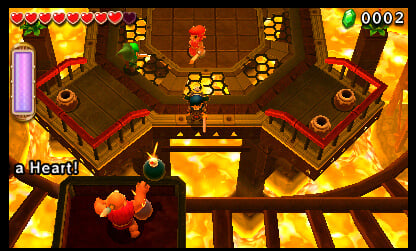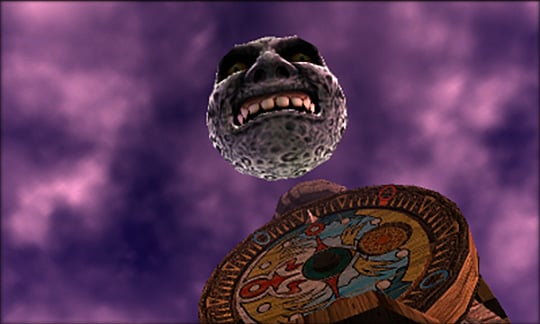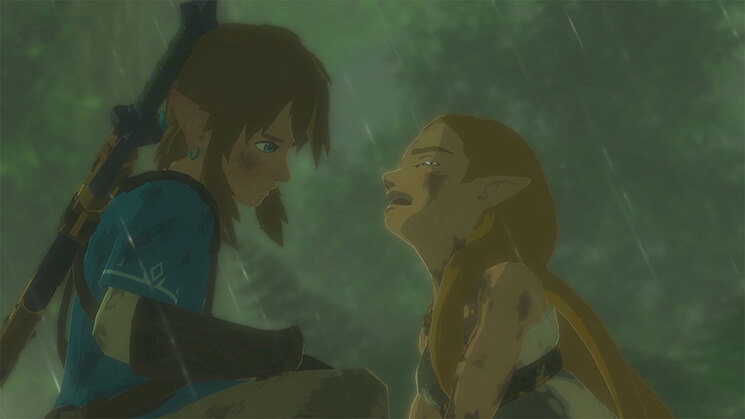Where Does Link's Awakening Fit In The Legend Of Zelda Timeline?
With the impending release of the Nintendo Switch remake of The Legend of Zelda: Link’s Awakening, a new generation of gamers will soon be exposed to one of the foundational games of the Legend of Zelda series. But where exactly does Link’s Awakening fit into the chronology of the Zelda games?
The Legend of Zelda timeline is infamously and absurdly convoluted. For years, Nintendo spokespeople made it clear that all of the Zelda games were officially interconnected, but it was difficult to piece them together due to each game’s vastly different representations of characters such as Link and Ganondorf.
In 2011, Nintendo published a book called Hyrule Historia in order to clear the air—but since then, they’ve made additional alterations to the chronology. The most up-to-date timeline is reflected in an official Zelda website that details the relationships between the various threads of The Legend of Zelda’s fractured story.
That’s right. In The Legend of Zelda, there are multiple timelines, timelines-within-timelines, and even a game that is officially canon but inexplicably doesn’t fit into any timeline at all.
Most notably, the Link who serves as the protagonist of every Legend of Zelda game is canonically not the same person in each game; since the chronology of the games spans thousands of years, this wouldn’t make sense.
Instead, throughout the history of Hyrule, Link (and Zelda) are repeatedly reincarnated whenever their powers are needed.
So buckle up, y’all—here’s our attempt to make sense of the magnificent morass that is the story of The Legend of Zelda.
Nintendo
The Legend of Zelda narrative begins with Skyward Sword, which takes place thousands of years before the rest of the Zelda games. The game relates the origin stories of Link and Zelda, who travel from their elevated home of Skyloft to save the Triforce and establish the Kingdom of Hyrule—the setting of all subsequent Zelda games—on the surface world. The origins of other key plot elements from the Zelda games, such as the Master Sword, are also explained in Skyward Sword.
Skyward Sword is followed by The Minish Cap, which explains the origin of Link’s iconic green hat and introduces the villain Vaati, and Four Swords, in which Link prevents Vaati from returning to destroy Hyrule.
Next comes Ocarina of Time, which includes the chronological first appearance of series antagonist Ganondorf (who is implied to be the reincarnated rage of Demise, the villain of Skyward Sword). The climactic battle against Ganondorf at the end of Ocarina of Time results in a split timeline that defines the rest of the Zelda series: one thread follows Link’s victory in the battle, and another follows his defeat.
The timeline in which Link is defeated is the one that includes Link’s Awakening, so we’ll go over that one first. In this timeline, Ocarina of Time is followed by A Link to the Past, which introduces the parallel-world element present in many Zelda games by creating a split between the Light World of Hyrule and the Sacred Realm, also known as the Dark World of Ganon.
After Link defeats Ganon in A Link to the Past, he strikes out to explore parts unknown, leading directly into the events of Link’s Awakening. We won’t go into the story of Link’s Awakening too much, since we don’t want to spoil it for fans who didn’t play the Game Boy version, but it is followed by Oracle of Seasons and Oracle of Ages, in which Link travels to lands outside Hyrule to battle a resurrected Ganon. (Ganon getting resurrected is a common theme in the Zelda games.)

Nintendo
Next in this timeline comes A Link Between Worlds and Tri Force Heroes. In A Link Between Worlds, which was originally sold as a sequel to A Link to the Past, Link travels to an alternate-dimension Hyrule named Lorule to defeat a once-again-resurrected Ganon, who has fused with a sorcerer named Yuga. In Tri Force Heroes, Link travels to yet another foreign land called Hytopia, which he saves from evil with the help of two teammates.
At this point in the story, we’ve arrived at the original Zelda games, The Legend of Zelda and The Adventure of Link, which bookend this strand of the timeline. In the classic story of The Legend of Zelda, Link rescues Hyrule from Ganon (resurrected once more) by collecting all of the pieces of the Triforce of Wisdom. In The Adventure of Link, everyone’s favorite green-wearing hero prevents Ganon from being resurrected for (presumably) the final time.
That wraps up the Link’s Awakening timeline, but I’m a completionist, so I’m going to briefly explain the other strands of the Zelda timeline. Read on if you dare.
Let’s go back to the split at the end of The Ocarina of Time and pretend that Link wins this time around. The timeline then splits yet again, into two threads that Nintendo has dubbed the Child Era and the Adult Era.

Nintendo
In the Child Era thread, The Ocarina of Time is followed by Majora’s Mask, in which Link saves the world from being destroyed by a giant, malevolent moon. Hundreds of years later, the events of Twilight Princess occur, in which—you guessed it—Link defeats Ganon again and prevents Hyrule from being taken over by a parallel dimension called the Twilight Realm
The end of the Child Era thread is marked by Four Swords Adventures, which takes place a century after the conclusion of Twilight Princess. Four Swords Adventures ends with the final defeat of Ganon: instead of being killed, so he can just be resurrected yet again, he is sealed inside a magic sword forever.
Okay, let’s go back to Ocarina one more time. Following the Adult Era thread takes us to The Wind Waker, which takes places in a future Hyrule that has been flooded and turned into a land of scattered islands. Ganon has been resurrected—again—and is defeated when Link turns him to stone using the magic of the Master Sword. The narrative is immediately picked up by Phantom Hourglass, in which Link saves Zelda (incarnated as the pirate Tetra) from a spooky, haunted Ghost Ship.
Which brings us to the final game of the Adult Era, Spirit Tracks. In this game, the story fast-forwards 100 years to the era of New Hyrule, a kingdom founded by Tetra. With the help of a steam-powered locomotive, Link saves New Hyrule from an evil demon named Malladus.

Nintendo
You might be wondering where Breath of the Wild fits into these timelines. The answer is that it doesn’t, but it’s still part of the official canon. According to a Famitsu interview with some of the series creators, the game takes place at the very end of the Zelda timeline, but the specific thread that it fits into is left up to the player’s imagination. Regardless of the specific timeline in which it resides, Breath of the Wild features another resurrected Ganon, who must be defeated by Link and Zelda in order to save and rebuild Hyrule.
So yeah, that’s our breakdown of the extremely complex timeline of The Legend of Zelda. Just don’t get too comfortable with this information, since it’s apt to change once another Zelda title comes out.
“Hyrule’s history changes over time,” said series producer Eiji Aonuma in the aforementioned Famitsu article. “When we think of the next game and what we want to do with it, we might think, ‘oh, this’ll fit well,’ and place it neatly into the timeline, but sometimes we think, ‘oh crap,’ and have to change the placement.”
This article was written by Alexander Lee, an esports journalist, lifelong Nintendo fan, and proud cat dad. Follow him on Twitter @alexleewastaken, and check out more of his work on his website www.alexlee.work.













 ITEM ADDED TO YOUR CART!
ITEM ADDED TO YOUR CART! 


Leave a comment